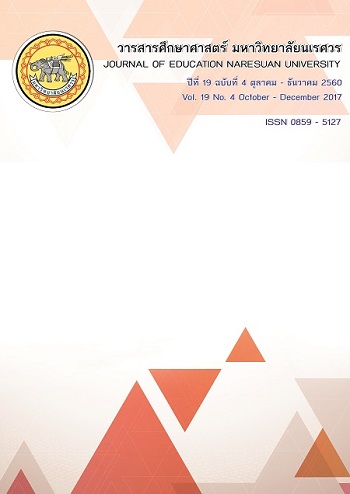AN INVESTIGATION INTO COMMON MISTAKES IN PARAGRAPH WRITING OF THE FIRST-YEAR ENGLISH-MAJORED STUDENTS: A CASE STUDY IN CAN THO UNIVERSITY, VIETNAM
Main Article Content
Abstract
Since English is the Second Language (L2) that English-majored students at Can Tho University (CTU), the Mekong Delta Region, Vietnam, have to learn, writing seems to be the most difficult area in the four skills for the English language learners. The present study focuses on common mistakes in writing paragraphs of the first-year students majoring in English at Can Tho University¬, in the academic year 2013-2014. The relevant data for the study was collected from the students’ written products and the in-depth interviews. The students were asked to write a free paragraph about “Your new life in Can Tho University” in English. The time allowed to do the test was 30 minutes. Each of the students made a paragraph of at least 120 words. The total number of papers to be analyzed was 60, and all of the mistakes in the paragraphs were identified and classified into thirteen categories. The results reported that the number of the “Word Formation”, and “Word Choice” mistakes in participants’ writing were the most serious or frequent, whilst the least commonly made mistakes were “Subject/Verb Agreement”, and “Word Order”. The interviews analysis also revealed that there were apparent connections between analyzed data from participants’ papers and teachers’ responses as well as students in the interviews. From these results, some implications are suggested to help students reduce grammatical mistakes in their papers as well as help English teachers who will give positive influence to their students’ needs
Article Details
The owner of the article does not copy or violate any of its copyright. If any copyright infringement occurs or prosecution, in any case, the Editorial Board is not involved in all the rights to the owner of the article to be performed.
References
Alamargot, D. & Chanquoy, L. (2001). Through the models of writing. Dordrecht: Kluwer Academic Publishers.
Allen, H. B. and Russel, N. B. (1965). Teaching English as a second language. USA: McGraw Hill.
Ausubel, D. P. (2000). The acquisition and retention of Knowledge: a cognitive view. Boston: Kluwer Academic Publishers.
AL-Hamash, K & Rhim, S. A. (1977). Teaching English as a Foreign Language. A publication of the Institute for the Development of English Language Teaching in Iraq, Baghdad.
Al-Mutawa, N., & Kailani , T. (1989). Methods of Teaching English to Arab Students. London: Longman.
Corder, S. P. (1974). Error Analysis. London: Longman.
Crystal, D. (1987). A dictionary of linguistics and phonetics. New York: Basil Blackwel.
Darus, S., Tg Mohd Maasum, T. N. R., Stapa, S. H., Omar, N., & Ab Aziz, M. J. (2007). Developing an Error Analysis Marking Tool for ESL Learners. Proceedings of the 7th WSEAS International Conference on Applied Computer Science (ACS’07), 21-23.
Ellis, R. (1996). Second language acquisition research and language teaching. Oxford: Oxford University Press.
Feist, B. (1996). Applied Communication Skills: Writing Paragraphs. Cambridge Adult Education.
Huang, S. L. (2001). Error analysis and teaching Composition. Master Thesis. National Tsing Hua University.
Jain, M. P. (1974). Error analysis: source, cause and significance. In J.C. Richards, Error analysis, (pp.189–215). Singapore: Longman.
\Karala, U. M. (1986). Error Analysis of the Written English of Jordanian Third Secondary Students. (Master thesis, American University).
Köhlmyr, P. (2003). To err is human - An Investigation of Grammatical Errors in Swedish 16-year-old Learners' Written production In English. Göteborgs Universities.
Kramer, M.G., Leggett, G., & Mead, D. (1995). Prentice Hall Handbook for Writers. Englewood Cliffs, NJ: Prentice Hall.
Kutz, E., Groden, S., & Zamel, V. (1993). The Discovery of Competence: Teaching and learning with diverse student writers. Portsmouth, NH: Boynton/Cook Publishers.
Lam, N. T. (2010). First-year English majored students’ common types of writing errors: A case study in Soc Trang Community College. Vietnam: Can Tho University.
Langan, J. (2000). College Writing Skills with Readings (5th ed). London: McGraw –Hill.
Michaelides, N. N. (1990). Error analysis: An aid to teaching. English Teaching Forum, 38(4), 28-30.
Mukattash, K., & Doushaq, M. (1990). A field study of methods used to evaluate writing in Arabic secondary schools in Irbid. Journal of the Jordan Academy of Arabic, 14(38), 177-208.
Pham, P. Q. N (2004). Error in the translation of topic-comment structures of Vietnamese into English. (Doctoral dissertation). Sydney: University of Wesrern Sydney.
Pierpont, J. (2004). ESL students in first-year writing seminars: helping instructors to address their language needs. New York: Cornell University.
Qorro, M. (1988). The Teaching of Writing: Problems and prospects at the communication skills unit. Departmental Seminar Paper (Mimeograph).
Russell, S. (1993). Grammar, structure and style: A practical guide to A-Level English. Great Britain: Oxford University Press.
Sawsan, A. A., & Abdulamir, A. A. (2012). Linguistic and social factors affecting Saudi first-year University students: A close look at common errors. Kingdom of Saudi Arabia.
Taif Swan, M. & Smith, B. (2001). Learner English: A teacher's guide to interference and other problems (2nd ed.). Cambridge: Cambridge University Press.
Tan, B. K. (1978). Proficiency in English amongst secondary four Chinese stream students in Singapore. RELC. Journal, 9, 39–53.
Tran, T. H. B. (2005). An error analysis on the use of cohesive devices in writing by freshmen majoring in English at Thang Long University. Vietnam: Hanoi National University.
Tribble, C. (1996). Writing. Oxford: Oxford University Press.
Watson, I. (1980). Investigating errors of beginning mathematicians. Educational Studies in Mathematics, 11(3), 319-329.
Wray, A. & Aileen, B. (2006). Project in Linguistics – A Practical guide to Researching Language. London: Hodder Arnold Publication.


